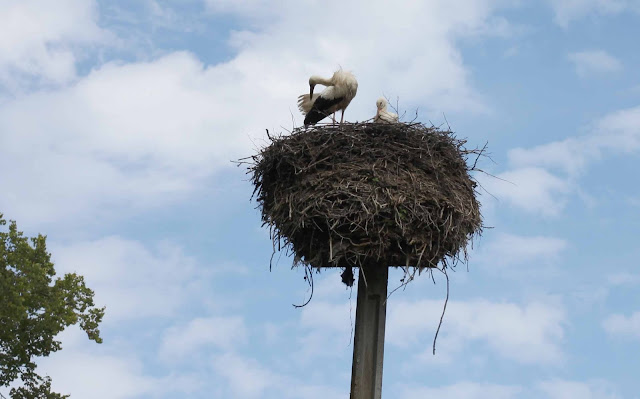For Vikings the ship was the horse of the sea - in Tallinn you can see an excellent exhibition of Vikings
 |
| The Gokstadt boat from Norway. Photos: Sirpa Pääkkönen |
 The Viking civilization was largely influences by sea and they had excellent ship-building skills, this we know. One legend tells that they wear helmets, but that is not true. Or they wear helmets in cartoon, tell the exhibition Vikings Life Beyond the Legend at Seaplane Harbour in Tallinn.
The Viking civilization was largely influences by sea and they had excellent ship-building skills, this we know. One legend tells that they wear helmets, but that is not true. Or they wear helmets in cartoon, tell the exhibition Vikings Life Beyond the Legend at Seaplane Harbour in Tallinn.The exhibition by Swedish History Museum is full of details and interesting knowledge about the Vikings. The exhibition tells about the culture and daily life of the Vikings.
The exhibition consists about 550 Viking Age finds, original coins, weapons, household tools, talismans, bones, and ship details. You can also follow stories about trade, conquest, beliefs and daily life.
The original objects are from the period between about 750-1150 years. Before arriving to Tallinn, the exhibition has visited United States and Canada.
In the exhibition you can see how skillful vikings were making pieces of jewellery. There are necklaces made of pearls or beads and silver jewels with rich ornamentation.
Jewellery often included exotic raw materials, such as cowrie shells from the Red Sea and the Indian Ocean. Mytchical animals and birds were widely used in the decoration of jewellery.
During the 9th and 10th centuries Scandinavian women of high status often wore gilded brooches and colourful beaded embroidery.
Most Scandinavian were farmers. They lived off the land, farming, raising pigs, cattle and sheep, hunting and fishing. For women the key was a visible symbol of her power as the Lady of the House. Keys are common finds in Norse graves. Women were in charge of the households.
Norse women could be both higly regarded and feared. Aristocratic women were said to be able to predict and manipulate destinity.
For vikings the ship was the horse of the sea. The ship was an ancient symbol in Scandinavia and a vital factor in Viking expansions, travels and trade. The journays took much longer than today and sea travel could be very dangerous.
In the exhibition you'll get also information about the funeral and the gods of the Vikings. Odin, the All-Father, was the most powerful with his wife Frigg, followed by his son Thor and his wife Sif. The names of the Viking gods survive in the names of the days of the week in many European languages, for example Tuesday is Tyr's day and Wednesday is Odin's day.
Vikings: Life Beyond the Legend in Tallinn until 15th January 2017, Sea Museum.








Kommentit
Lähetä kommentti